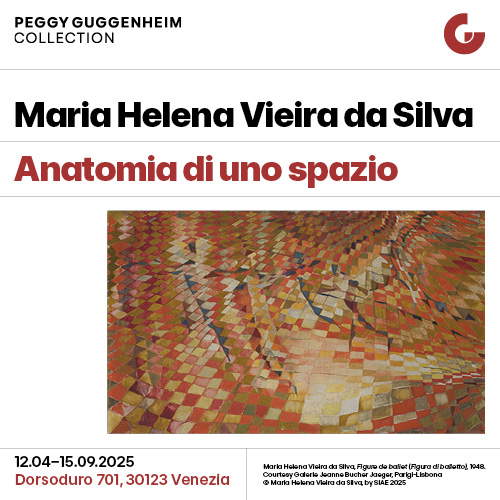Florence, reopens Villa La Quiete garden, Medici masterpiece and treasure trove of 18th-century botany
For the first time in its history, the historic Garden of Villa La Quiete opens its doors to the public. A secret place, a precious 18th-century treasure chest hidden in the greenery of the Castello district in Florence, the garden represents one of the most authentic testimonies of the Medici landscape, which has remained intact over the centuries. Thanks to a complex recovery and enhancement intervention, promoted by the University of Florence Museum System and funded by the National Recovery and Resilience Plan (PNRR), visitors will be able to admire, from next May 16, starting at 6 p.m. with free admission, the original layout, wanted by Anna Maria Luisa de’ Medici, known as the Electrice Palatina.
The garden was in fact designed and built between 1724 and 1727 at the behest of the last descendant of the Medici dynasty, who had returned to Florence after a long stay in Germany. Widowed and childless, Anna Maria Luisa had chosen Villa La Quiete as her summer residence, continuing the tradition started by Grand Duchess Christina of Lorraine, who already frequented the residence in the 17th century. The garden represents the last of the Medici holiday gardens, a perfect synthesis between the geometric rigor of the formal garden and the naturalistic richness of the park.


Directly from the Electress’s apartment, overlooking the frescoed rooms, is the upper terrace: a riot of Impruneta terracotta vases and sponge urns that housed the “flower garden.” Here Anna Maria Luisa grew her favorite species: roses, jasmine and especially rare bulbs such as tulips, daffodils, hyacinths and fritillaries. The scent of these flowers permeated the rooms of the villa, accompanying the daily life moments of the noblewoman and her retinue.
From the terrace one can observe the lower garden, perfectly symmetrical, with ten geometric flowerbeds arranged around a central pool, intersected by two main avenues. On either side are the main architectural elements: the “Samaritan” and “Noli Me Tangere” fountains, a small decorated grotto, and the portal to the Limonaia, now partially hidden by the holm oaks of the ragnaia. The slope of the land was exploited to cascade fountains and water features, thanks to an ingenious water system diverted from Monte Morello by order of the Electress.
Even today, in the fields north of the villa, signs of the canalizations can be seen: wells, cisterns and even a bridge for the passage of water pipes. It is no coincidence that the Castello area owes its name to “castellum acquae,” a Latin term for the cisterns of the Roman aqueduct. This abundance of water and sunny location made the area ideal for the construction of villas such as Careggi, Castello, Petraia, Topaia and, of course, La Quiete.
A distinctive element of the garden is the ragnaia, a plant structure dedicated to birding, a common custom in Italian gardens of the time. Consisting of green walls of holm oaks and Mediterranean scrub plants such as phillyrea, alaterno and boxwood, the ragnaia runs parallel to the formal garden. In its avenues were stretched “ragne,” fine nets stretched to the ground to catch birds attracted by the shade and berries. The pruning of the holm oaks prevented the animals from perching on the trees, forcing them to climb down and become entangled. But it was not just a space for hunting: green rooms such as the “octagonal hall” and the “royal hall” were also places of refreshment, enhanced by stone stools and dedicated to the contemplation of nature.


Unlike other ragnaie, which have been modified over the centuries, that of La Quiete has remained almost intact thanks to the constant management of the Montalve, the female religious institution that owned the villa until the late twentieth century. Botanical consistency is confirmed by the survival of the original species: boxwood, holm oak, citrus and bulb flowers.
The Electress’ garden was also a place of agricultural and medicinal production. In addition to ornamental flowers, medicinal plants were grown there for the villa’s 17th-century apothecary shop, which still exists, and even vegetables and fruit. The flower beds housed crops such as kale, squash, onions, artichokes, thistles, and peas. In the meadows next to the lemon house stood vegetable gardens and pomariums, while espaliered fruit trees, such as apple, pear, and grapevines, grew along the perimeter wall. This productive dimension is now recovered thanks to an experimental vegetable garden commissioned by the University of Florence, which revives the ancient crops documented in the archives.
Thedecorative apparatus is remarkable, entirely centered on female religious themes related to nature. The “Samaritan Woman” fountain, with a sculptural group by Gioacchino Fortini, celebrates the Gospel episode of the water of eternal life. The “Noli Me Tangere,” a lost fresco by Sigismondo Betti, evoked the encounter between the resurrected Christ and Magdalene. Finally, the fresco with “Saint Dorothy” in the Limonaia, now disappeared, recalled the patron saint of gardeners.
The grotto located under the terrace, though lacking its original decorations, retains colorful pebble floors and walls covered with shells. The sounds of mechanical birds, once activated by water features, are lost, but the charm of this corner inspired by the “Cave of the Animals” in the nearby Villa di Castello remains intact. The vase rooms, now exhibition spaces, house ancient tools used for landscaping, such as the “ammazzacavallo,” a winch used to lift citrus basins, and the “carromatto,” a wagon without sides for seasonal transport.
The restoration of the garden, part of the PNRR project “Historic Parks and Gardens,” was supervised by the AICOM group with the advice of landscape architects Gianfranco Franchi and Giorgio Galletti. The work involved the grotto, the stanzoni, the upper garden with the reconstitution of bulbous plants according to the original designs, and the Ragnaia, which underwent extraordinary maintenance based on agronomic surveys. Boxwood hedges and sclerophyllous species were pruned, supplemented or replaced to ensure the survival of the garden and increase biodiversity.
The University Museum System, in collaboration with the University of Florence’s Programming and Major Works Development Area, followed each phase of the construction site. Thanks to archival documents, it has been possible to reinstate species that have disappeared, increase collections of citrus and ancient fruits, and enhance the entomodiversity of the site. The result is a masterpiece reborn, which for the first time is revealed to the general public in its authentic beauty, as the last great lady of the house of Medici had dreamed and wanted it.
 |
| Florence, reopens Villa La Quiete garden, Medici masterpiece and treasure trove of 18th-century botany |
Warning: the translation into English of the original Italian article was created using automatic tools. We undertake to review all articles, but we do not guarantee the total absence of inaccuracies in the translation due to the program. You can find the original by clicking on the ITA button. If you find any mistake,please contact us.



























